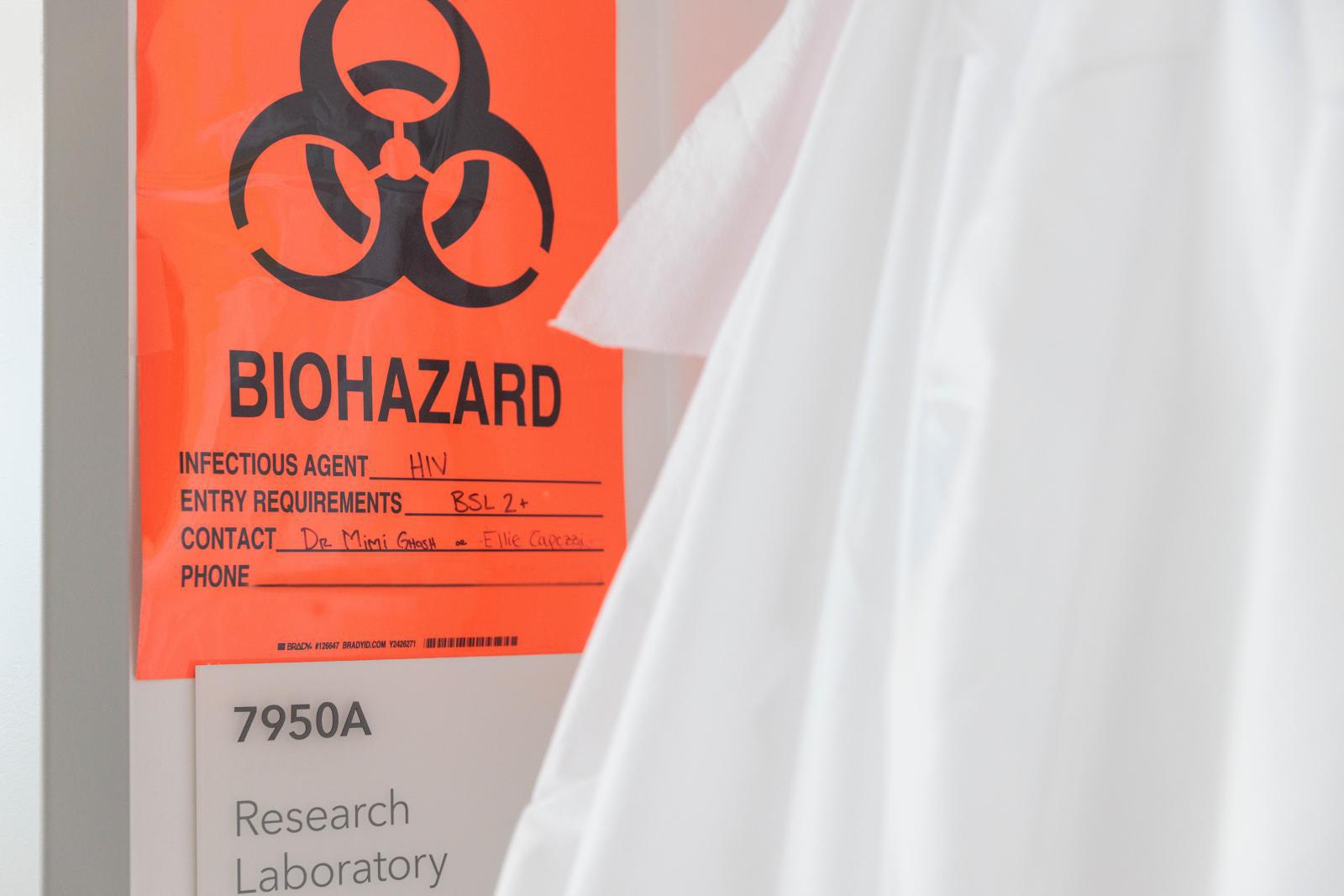Institutional Biosafety Committee
In accordance with the NIH Guidelines for Research Involving Recombinant or Synthetic Nucleic Acid Molecules (NIH Guidelines), the George Washington University (GW) has established an Institutional Biosafety Committee (IBC). The IBC is responsible for reviewing projects that involve, but are not limited to, recombinant DNA, RNAi, Dual Use Research (DURC), genetically modified microorganisms, plants and animals, artificial gene transfer, pathogens, biologically derived toxins and human materials. Review the IBC Charter (PDF) to learn more or contact us to join the committee.
The IBC ensures that all instructional and research laboratory activities are conducted in compliance with requirements and federally mandated guidelines, such as those outlined by the NIH, CDC, USDA, OSHA and GW, by advising, reviewing, and approving policies and procedures related to procurement, use, storage, transportation, and disposal of biohazardous materials. Biohazardous materials are defined as materials of biological origin that have the capacity to produce deleterious effects on humans or animals. They include:
- Pathogens: Any agent that can cause disease in healthy human adults.
- Recombinant DNA: Molecules that are constructed outside living cells by joining natural or synthetic DNA segments to DNA molecules that can replicate in a living cell, and the molecules that result from the replication of those cells.
- Select Agents: Pathogens and toxins deemed high risk by the CDC or US Department of Agriculture to pose a high risk to human, animal or plant health and have the potential to be used for terrorist activity.
- Transgenic Animals: See the reference table from the NIH Office of Science Policy for a listing of animal experiments covered under the NIH Guidelines with references to the corresponding NIH Guidelines sections and biosafety levels. The PI is responsible for assuring that the transgenes do not include gammaretroviral LTRs of more than one-half of a viral genome.
- The IBC also requires registration of research using material that may contain bloodborne pathogens (e.g. blood, tissues, or cells). It is expected that investigators follow the University Blood Borne Pathogen (BBP) Exposure Control Plan for all other work involving human biological materials.
- For keeping microorganisms and/or biological toxins in storage only (not actively in use) an expedited registration process (reviewed administratively only) can be followed. Once agents are utilized in research, they have to be registered following the normal route.
Biosafety Regulations and Guidelines for Risk Assessment
- NIH Guidelines for Research Involving Recombinant or Synthetic Nucleic Acid Molecules (NIH Guidelines)
- FAQs for Research on Genetically Modified (Transgenic) Animals – May 2019
- NIH/CDC Biosafety in Microbiological and Biological Laboratories, 6th Ed
- OSHA Bloodborne pathogens
- Biosafety Levels for Biological Agents
- Public Health Agency of Canada Pathogen Safety Database
- CDC Biological Risk Assessment Generic Form
- World Health Organization Laboratory Biosafety Manual
- CDC/MMWR Guidelines for Safe Work Practices in Human and Animal Medical Diagnostic Laboratories
- CDC Guideline for Disinfection and Sterilization in Healthcare Facilities, 2008
- ABSA Risk Group Classification
- NIH Recombinant DNA Advisory Committee: Guidelines for Research Involving Lentiviral Vectors
- IBC Protocol Risk Assessment and Determination of NIH Guidelines
- Viral Vector Training (contact labsafety
 gwu [dot] edu)
gwu [dot] edu) - Viral Vector Quick Biosafety Reference
- Arthropod Containment Guidelines
- GW ACL3 Checklist
- GW ABSL3 Checklist
- Animal Biosafety Levels
Resources for Select Agents
If you are not sure if your research involves the use of a select agent ( biological agents that are deemed by the government to have the potential to pose a severe threat to public health and safety) please check the CDC and USDA list of select agents and toxins: https://www.selectagents.gov/
For guidance with the forms or if you have any questions, please contact us.


